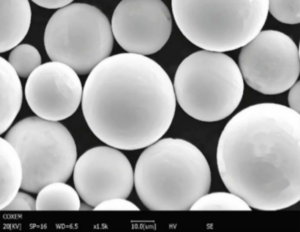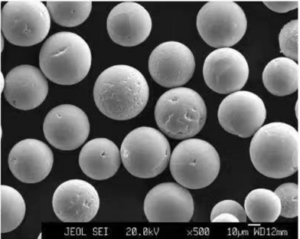Katmanlı İmalat (AM) makinelerinin büyüleyici dünyasına hoş geldiniz! Bu inanılmaz cihazlar, ürünleri nasıl yarattığımızı, tasarladığımızı ve ürettiğimizi devrim niteliğinde değiştiriyor. Metaller, plastikler ve seramikler gibi malzemeleri kullanarak, doğrudan dijital modellerden katman katman nesneler inşa edebildiğinizi hayal edin. Bilim kurgu gibi mi geliyor? Şu anda oluyor!
Bu makalede, AM makineleriuygulamalarına, avantajlarına ve elbette sihirlerine yakıt sağlayan metal tozlarına odaklanarak, inceliklerini inceleyeceğiz. Kullanılan metal tozlarının türlerini, bileşimlerini, özelliklerini ve çok daha fazlasını keşfedeceğiz. Öyleyse, kemerlerinizi bağlayın ve AM makineleri dünyasında ilgi çekici bir yolculuğa hazır olun.
AM Makinelerine Genel Bakış
Genellikle 3D baskı olarak bilinen Katmanlı İmalat, malzeme katman katman ekleyerek nesneler oluşturmayı içerir. Genellikle malzeme çıkarma (kesme, delme vb.) içeren geleneksel üretim yöntemlerinden farklı olarak, AM tamamen hassasiyet ve verimlilikle ilgilidir. Bu makineler, havacılık, otomotiv, sağlık ve tüketim malları dahil olmak üzere çeşitli endüstrilerde kullanılmaktadır.
AM Makineleri Nelerdir?
AM makineleri, fiziksel nesneleri katman katman oluşturmak için dijital tasarımları kullanan gelişmiş cihazlardır. Metaller, polimerler ve seramikler dahil olmak üzere çeşitli malzemelerle çalışırlar. Bu makineler, geleneksel üretim yöntemleriyle elde edilmesi imkansız olan karmaşık geometriler oluşturabilir.
AM Makineleri Nasıl Çalışır?
AM makineleri basit ama sofistike bir süreç izler:
- Tasarım: Bilgisayar destekli tasarım (CAD) yazılımı kullanılarak bir 3D model oluşturulur.
- Dilimleme: Model ince katmanlara dilimlenir.
- Baskı: Makine, dijital taslağı takip ederek malzemeyi katman katman ekler.
- İşlem Sonrası: Basılan nesne, parlatma veya ısıl işlem gibi gerekli işlemlerle tamamlanır.
AM Makinelerinin Faydaları
- Karmaşık Geometriler: Geleneksel yöntemlerin elde edemeyeceği karmaşık tasarımlar oluşturun.
- Malzeme Verimliliği: Çıkarıcı imalata kıyasla minimum atık.
- Özelleştirme: Kişiselleştirilmiş ürünler için tasarımları kolayca değiştirin.
- Hız: Hızlı prototip oluşturma ve üretim.
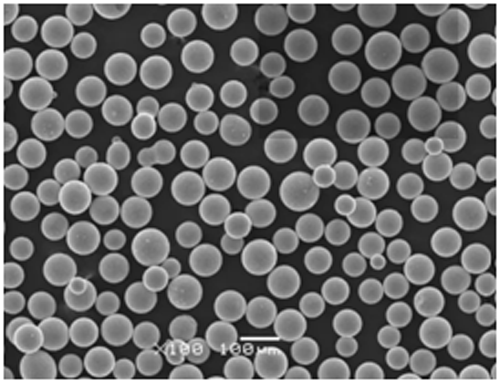
AM Makinelerinin Türleri
Her biri benzersiz yeteneklere ve uygulamalara sahip farklı AM makine türlerine dalalım.
1. Stereolitografi (SLA)
SLA, sıvı reçineyi katı nesnelere dönüştürmek için bir lazer kullanır. Pürüzsüz yüzeylere sahip detaylı prototipler oluşturmak için idealdir.
2. Seçici Lazer Sinterleme (SLS)
SLS, toz halindeki malzemeyi eritmek için bir lazer kullanır. Çeşitli malzemelerden dayanıklı, işlevsel parçalar üretmek için harikadır.
3. Eriyik Biriktirme Modelleme (FDM)
FDM, nesneler oluşturmak için termoplastik filamentleri eritir ve ekstrüde eder. Hobiler ve endüstriyel uygulamalar için popüler bir seçimdir.
4. Doğrudan Metal Lazer Sinterleme (DMLS)
DMLS, güçlü ve karmaşık metal parçalar oluşturarak metal tozunu sinterlemek için bir lazer kullanır. Havacılık ve tıp endüstrilerinde yaygın olarak kullanılmaktadır.
5. Elektron Işınlı Eritme (EBM)
EBM, metal tozunu eritmek için bir elektron ışını kullanır. Yüksek mukavemetli, yüksek sıcaklıklı uygulamalar için mükemmeldir.
AM Makineleri için Metal Tozları
Metal tozları, özellikle yüksek mukavemet ve hassasiyet gerektiren endüstrilerde birçok AM işleminin kalbidir. İşte AM'de kullanılan bazı temel metal tozları:
1. Titanyum Alaşımları (Ti-6Al-4V)
Açıklama: Titanyum alaşımları, yüksek mukavemetleri, düşük ağırlıkları ve mükemmel korozyon dirençleriyle bilinir.
Uygulamalar: Havacılık, tıbbi implantlar, otomotiv.
Mülkler: Yüksek mukavemet/ağırlık oranı, biyouyumluluk, mükemmel yorulma direnci.
2. Paslanmaz Çelik (316L)
Açıklama: Korozyon direnci ve mukavemeti ile bilinen çok yönlü bir alaşım.
Uygulamalar: Tıbbi cihazlar, gıda işleme, kimya endüstrileri.
Mülkler: Yüksek mukavemet, korozyon direnci, iyi süneklik.
3. Inconel (IN625)
Açıklama: Mükemmel yüksek sıcaklık mukavemetine ve korozyon direncine sahip bir nikel-krom süper alaşımı.
Uygulamalar: Havacılık, enerji üretimi, denizcilik endüstrileri.
Mülkler: Yüksek sıcaklık ve oksidasyon direnci, yüksek mukavemet.
4. Alüminyum Alaşımları (AlSi10Mg)
Açıklama: Hafif ve güçlü olan alüminyum alaşımları, iyi termal özellikler gerektiren parçalar için idealdir.
Uygulamalar: Otomotiv, havacılık, tüketici elektroniği.
Mülkler: Yüksek mukavemet/ağırlık oranı, iyi termal iletkenlik, korozyon direnci.
5. Takım Çeliği (H13)
Açıklama: Sertliği ve aşınma ve yıpranmaya karşı direnci ile bilinir.
Uygulamalar: Takımlama, kalıplar ve zımbalar.
Mülkler: Yüksek sertlik, aşınma direnci, termal kararlılık.
6. Kobalt-Krom (CoCr)
Açıklama: Aşınma direnci ve biyouyumluluğu ile bilinen bir süper alaşım.
Uygulamalar: Tıbbi implantlar, diş protezleri, havacılık.
Mülkler: Yüksek aşınma direnci, mükemmel biyouyumluluk, yüksek mukavemet.
7. Bakır Alaşımları (CuCr1Zr)
Açıklama: Bakır alaşımları, termal ve elektriksel iletkenlikleri için değerlidir.
Uygulamalar: Elektrikli bileşenler, eşanjörler, roket motoru bileşenleri.
Mülkler: Yüksek termal ve elektriksel iletkenlik, iyi mukavemet.
8. Maraging Çeliği (1.2709)
Açıklama: Mükemmel tokluğa ve boyutsal kararlılığa sahip yüksek mukavemetli bir çelik.
Uygulamalar: Havacılık, takımlama, yüksek performanslı mühendislik.
Mülkler: Yüksek mukavemet, iyi tokluk, mükemmel kaynaklanabilirlik.
9. Nikel Alaşımı (Hastelloy X)
Açıklama: Oksidasyona ve yüksek sıcaklık mukavemetine karşı direnci ile bilinir.
Uygulamalar: Havacılık, kimyasal işleme, endüstriyel gaz türbinleri.
Mülkler: Yüksek sıcaklık mukavemeti, oksidasyon direnci, korozyon direnci.
10. Tungsten Karbür (WC-Co)
Açıklama: Son derece sert ve aşınmaya dayanıklı, zorlu ortamlarda kullanılır.
Uygulamalar: Kesici takımlar, aşınmaya dayanıklı parçalar, madencilik ekipmanları.
Mülkler: Yüksek sertlik, mükemmel aşınma direnci, yüksek termal iletkenlik.
Metal Tozlarının Bileşimi ve Özellikleri
İşte bu metal tozlarının bileşimine ve özelliklerine ayrıntılı bir bakış:
| Metal Tozu | Kompozisyon | Mülkler |
|---|---|---|
| Titanyum Alaşımları | Ti, Al, V | Yüksek mukavemet/ağırlık oranı, biyouyumluluk |
| Paslanmaz Çelik | Fe, Cr, Ni, Mo | Korozyon direnci, iyi süneklik |
| Inconel | Ni, Cr, Mo, Nb | Yüksek sıcaklık dayanımı, oksidasyon direnci |
| Alüminyum Alaşımları | Al, Si, Mg | Hafif, termal iletkenlik, korozyon direnci |
| Takım Çeliği | Fe, C, Cr, Mo | Sertlik, aşınma direnci, termal kararlılık |
| Kobalt-Krom | Co, Cr, Mo | Aşınma direnci, biyouyumluluk |
| Bakır Alaşımları | Cu, Cr, Zr | Termal ve elektriksel iletkenlik, mukavemet |
| Maraging Çelik | Fe, Ni, Co, Mo | Yüksek mukavemet, tokluk, kaynaklanabilirlik |
| Nikel Alaşımı | Ni, Cr, Mo, Fe | Oksidasyon direnci, yüksek sıcaklık mukavemeti |
| Tungsten Karbür | WC, Co | Sertlik, aşınma direnci, termal iletkenlik |
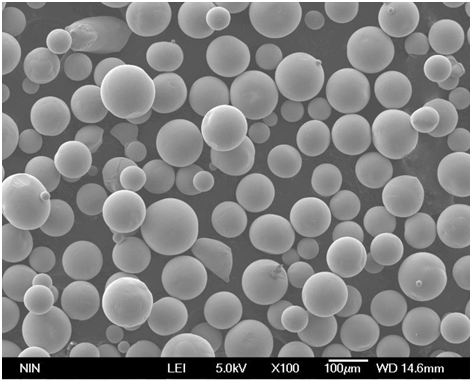
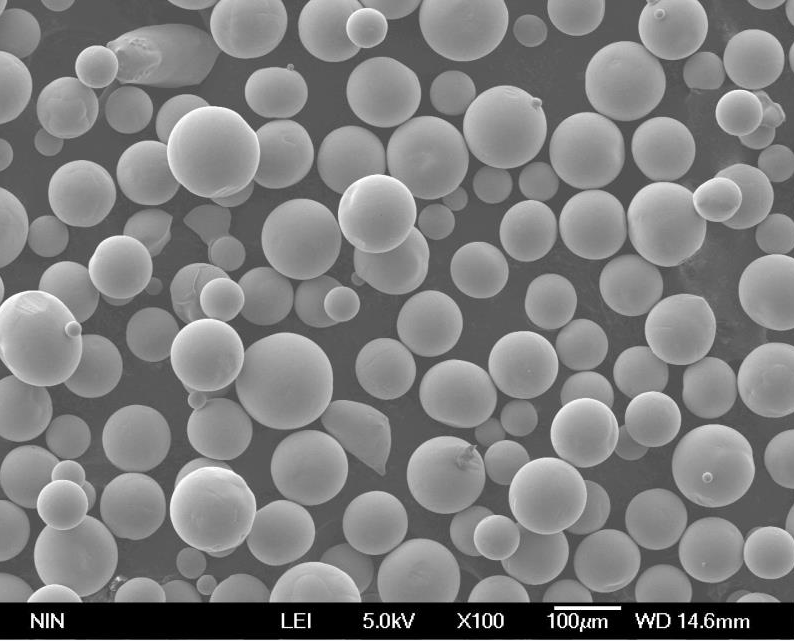
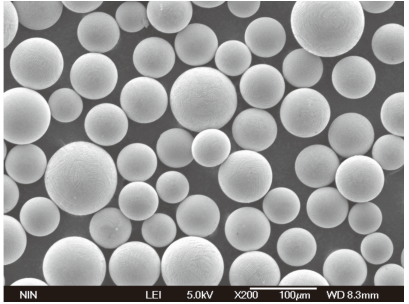
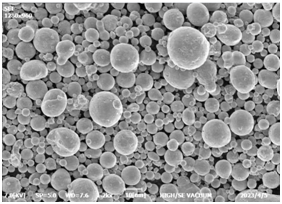
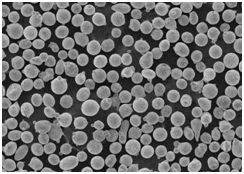

AM'de Metal Tozlarının Uygulamaları
AM'de metal tozlarının çok yönlülüğü, çeşitli endüstrilerde çok çeşitli uygulamalara olanak tanır:
| Endüstri | Uygulamalar |
|---|---|
| Havacılık ve Uzay | Motor bileşenleri, yapısal parçalar, eşanjörler |
| Tıbbi | İmplantlar, protezler, cerrahi aletler |
| Otomotiv | Hafif parçalar, motor bileşenleri, özel parçalar |
| Elektronik | Isı emiciler, konektörler, muhafazalar |
| Takımlama | Kalıplar, zımbalar, kesici takımlar |
| Enerji | Türbin kanatları, eşanjörler, enerji üretimi parçaları |
| Tüketim Malları | Takı, gözlük, özel tasarım ürünler |
Spesifikasyonlar, Boyutlar, Kaliteler ve Standartlar
AM için metal tozları seçerken, özelliklerini, boyutlarını, kalitelerini ve standartlarını dikkate almak çok önemlidir:
| Metal Tozu | Teknik Özellikler | Boyutlar | Notlar | Standartlar |
|---|---|---|---|---|
| Titanyum Alaşımları | ASTM B348, AMS 4999 | 15-45µm, 45-106µm | Ti-6Al-4V ELI | ASTM F2924, ISO 5832-3 |
| Paslanmaz Çelik | ASTM A276, ASTM F138 | 10-50µm, 20-63µm | 316L, 17-4 PH | ASTM F138, ISO 5832-1 |
| Inconel | AMS 5666, UNS N06625 | 15-45µm, 20-60µm | IN625, IN718 | ASTM B443, AMS 5662 |
| Alüminyum Alaşımları | ASTM B209, AMS 4225 | 20-63µm, 10-50µm | AlSi10Mg, AlSi12 | ASTM B918, ISO 3522 |
| Takım Çeliği | ASTM A681, AISI H13 | 15-45µm, 20-60µm | H13, D2 | ASTM A681, DIN 1.2344 |
| Kobalt-Krom | ASTM F75, ISO 5832-12 | 15-45µm, 10-50µm | CoCrMo, CoCrW | ASTM F75, ISO 5832-12 |
| Bakır Alaşımları | ASTM B152, C18150 | 10-50µm, 15-45µm | CuCr1Zr, C18150 | ASTM B187, AMS 4980 |
| Maraging Çelik | AMS 6514, AISI 18Ni(300) | 10-45µm, 20-60µm | 1.2709, 18Ni(300) | AMS 6520, DIN 1.6358 |
| Nikel Alaşımı | ASTM B435, UNS N06002 | 10-45µm, 20-60µm | Hastelloy X, N06002 | ASTM B435, AMS 5754 |
| Tungsten Karbür | ISO 9001, ASTM B777 | 5-20µm, 10-45µm | WC-Co, Kobalt bağlı | ISO 9001, ASTM B777 |
Tedarikçiler ve Fiyatlandırma Detayları
İşte metal tozlarının önde gelen bazı tedarikçileri ve fiyatlandırma detayları:
| Tedarikçi | Metal Tozları | Fiyat Aralığı (kg başına) |
|---|---|---|
| Höganäs AB | Paslanmaz Çelik, Takım Çeliği | $50 – $200 |
| Marangoz Teknolojisi | Titanyum Alaşımları, Inconel | $300 – $600 |
| Sandvik | Paslanmaz Çelik, Maraging Çelik | $100 – $400 |
| LPW Teknoloji | Kobalt-Krom, Inconel | $250 – $700 |
| GKN Katkı Maddesi | Alüminyum Alaşımları, Titanyum Alaşımları | $150 – $500 |
| AP&C (GE Katkı Maddesi) | Titanyum Alaşımları, Alüminyum Alaşımları | $200 – $800 |
| HC Starck | Tungsten Karbür, Kobalt-Krom | $100 – $300 |
| Arcam AB | Titanyum Alaşımları, Paslanmaz Çelik | $200 – $600 |
| Erasteel | Takım Çeliği, Maraging Çelik | $150 – $400 |
| Aubert & Duval | Nikel Alaşımları, Takım Çeliği | $200 – $500 |
Avantajları ve Sınırlamaları AM Makineleri
Herhangi bir teknoloji gibi, AM makinelerinin de güçlü ve zayıf yönleri vardır:
Avantajlar
| Avantaj | Açıklama |
|---|---|
| Tasarım Özgürlüğü | Karmaşık geometriler ve karmaşık tasarımlar oluşturun. |
| Malzeme Verimliliği | Malzeme katman katman eklendiğinden minimum atık. |
| Özelleştirme | Kişiselleştirilmiş ürünler için tasarımları kolayca değiştirin. |
| Hızlı Prototipleme | Tasarımdan bitmiş ürüne hızlı dönüş. |
| Talep Üzerine Üretim | İhtiyaç duyulduğunda parça üretin, envanter maliyetlerini azaltın. |
Sınırlamalar
| Sınırlama | Açıklama |
|---|---|
| Maddi Sınırlamalar | Tüm malzemeler AM süreçleri için uygun değildir. |
| Yüzey İşlemi | İstenen yüzey kalitesini elde etmek için işlem sonrası işlem gerektirebilir. |
| Boyut Kısıtlamaları | Geleneksel üretim yöntemlerine kıyasla sınırlı yapı hacmi. |
| Maliyet | Ekipman ve malzemeler için yüksek ilk yatırım. |
| Hız | Büyük ölçekli üretim için bazı geleneksel üretim yöntemlerinden daha yavaş. |
AM Makinelerinin Bileşimi ve Özellikleri
İhtiyaçlarınız için doğru makineyi seçmek için AM makinelerinin bileşimini ve özelliklerini anlamak çok önemlidir.
AM Makinelerinin Türleri ve Özellikleri
| Tip | Malzeme | Özellikler |
|---|---|---|
| SLA | Fotopolimer reçine | Yüksek hassasiyet, pürüzsüz yüzey kalitesi, prototipler için ideal |
| SLS | Naylon, Poliamid, Metal | Güçlü, dayanıklı parçalar, fonksiyonel prototipler için uygun |
| FDM | Termoplastik filament | Uygun fiyatlı, hızlı prototipleme ve hobiler için iyi |
| DMLS | Metal tozu (Ti, Al, SS) | Yüksek mukavemetli, karmaşık metal parçalar, havacılık, tıpta kullanılır |
| EBM | Metal tozu (Ti, CoCr) | Yüksek sıcaklık, yüksek mukavemetli parçalar, kritik endüstrilerde kullanılır |
AM Makinelerinin Özellikleri
| Mülkiyet | Açıklama |
|---|---|
| Yapı Hacmi | Yazdırılabilecek nesnenin maksimum boyutu. |
| Katman Çözünürlüğü | Her katmanın kalınlığı, yüzey kalitesini ve ayrıntıyı etkiler. |
| Malzeme Uyumluluğu | Makinenin kullanabileceği malzeme aralığı. |
| Baskı Hızı | Makinenin yazdırabileceği hız, üretim süresini etkiler. |
| Hassasiyet | Yüksek hassasiyetli uygulamalar için çok önemli olan basılı parçaların doğruluğu. |
AM Makinelerinin Uygulamaları ve Kullanım Alanları
AM makineleri, çeşitli endüstrilerde kullanılan çok yönlü araçlardır. Bazı yaygın uygulamaları inceleyelim:
Havacılık ve Uzay
AM makineleri, motor parçaları ve yapısal bileşenler gibi hafif, yüksek mukavemetli bileşenler oluşturmak için kullanılır. Karmaşık geometriler üretme yeteneği, ağırlığı azaltır ve havacılık bileşenlerinin verimliliğini artırır.
Tıbbi
Tıp alanında, AM makineleri özel implantlar, protezler ve cerrahi aletler üretir. Hassasiyet ve özelleştirme yetenekleri, tıbbi cihazların hastaların vücutlarına mükemmel uyum sağlamasını, sonuçları ve konforu iyileştirmesini sağlar.
Otomotiv
Otomotiv endüstrisi, hafif parçalar, özel bileşenler ve prototipler oluşturmak için AM makinelerini kullanır. Bu teknoloji, yeni tasarımların hızlı bir şekilde prototipini oluşturulmasına ve test edilmesine olanak tanıyarak geliştirme sürecini hızlandırır.
Tüketim Malları
AM makineleri, takılardan gözlüklere kadar özel tasarımlı tüketim mallarının üretilmesini sağlar. Ürünleri kişiselleştirme yeteneği, benzersiz ve özel ürünler arayan tüketicilere hitap eder.
Elektronik
Elektronikte, AM makineleri muhafazalar, soğutucular ve konektörler oluşturur. AM'nin hassasiyeti ve malzeme yetenekleri, elektronik bileşenlerin performans ve dayanıklılık için gerekli özellikleri karşılamasını sağlar.
Takımlama
AM makineleri, karmaşık geometrilere ve yüksek hassasiyete sahip kalıplar, zımbalar ve kesme aletleri oluşturmak için kullanılır. Bu uygulama, geleneksel takım yöntemleriyle ilişkili teslim sürelerini ve maliyetleri azaltır.
Metal Tozlarını Karşılaştırmak İçin AM Makineleri
AM için metal tozları seçerken, özelliklerini ve belirli uygulamalar için uygunluklarını karşılaştırmak esastır.
Titanyum Alaşımları ve Paslanmaz Çelik
Titanyum Alaşımları yüksek mukavemet/ağırlık oranları ve biyouyumlulukları ile bilinirler, bu da onları havacılık ve tıbbi uygulamalar için ideal kılar. Paslanmaz Çeliköte yandan, mükemmel korozyon direnci ve mukavemet sunarak çok çeşitli endüstriyel uygulamalar için uygun hale gelir.
Inconel ve Alüminyum Alaşımları
Inconel yüksek sıcaklık mukavemeti ve oksidasyon direnci ile bilinen bir nikel-krom süper alaşımıdır, havacılık ve enerji üretimi için idealdir. Alüminyum Alaşımları hafif olup iyi termal özelliklere sahiptirler, bu da onları otomotiv ve tüketici elektroniği uygulamaları için uygun hale getirir.
Takım Çeliği ve Kobalt-Krom
Takım Çeliği sertliği ve aşınma direnci ile değerlidir, bu da onu takım uygulamaları için ideal kılar. Kobalt-Krom yüksek aşınma direnci ve biyouyumluluk sunar, tıbbi implantlar ve diş protezleri için uygundur.
Bakır Alaşımları ve Maraging Çeliği
Bakır Alaşımları mükemmel termal ve elektriksel iletkenlik sağlarlar, bu da onları elektrik bileşenleri ve ısı eşanjörleri için uygun hale getirir. Maraging Çelik yüksek mukavemet ve tokluk sunar, havacılık ve yüksek performanslı mühendislik uygulamaları için idealdir.

SSS
| Soru | Cevap |
|---|---|
| Katmanlı İmalat Nedir? | Katmanlı İmalat (AM), malzeme katman katman ekleyerek nesneler oluşturma sürecidir. |
| AM makineleri nasıl çalışır? | AM makineleri, fiziksel bir nesne oluşturarak malzeme katman katman eklemek için dijital tasarımlar kullanır. |
| AM makinelerinde hangi malzemeler kullanılabilir? | AM makineleri, metaller, polimerler ve seramikler dahil olmak üzere çeşitli malzemeler kullanabilir. |
| AM makinelerinin avantajları nelerdir? | Avantajları arasında tasarım özgürlüğü, malzeme verimliliği, özelleştirme, hızlı prototipleme ve talep üzerine üretim bulunur. |
| AM makinelerinin sınırlamaları nelerdir? | Sınırlamaları arasında malzeme kısıtlamaları, yüzey kalitesi, boyut kısıtlamaları, maliyet ve hız bulunur. |
| Hangi endüstriler AM makineleri kullanır? | Endüstriler arasında havacılık, tıp, otomotiv, elektronik, tüketim malları ve takım yer alır. |
| AM için doğru metal tozunu nasıl seçerim? | Uygulama gereksinimleri, malzeme özellikleri ve AM makinenizle uyumluluk gibi faktörleri göz önünde bulundurun. |
| AM'de kullanılan bazı yaygın metal tozları nelerdir? | Yaygın metal tozları arasında Titanyum Alaşımları, Paslanmaz Çelik, Inconel, Alüminyum Alaşımları, Takım Çeliği ve Kobalt-Krom bulunur. |
| AM makineleri fonksiyonel parçalar üretebilir mi? | Evet, AM makineleri yüksek hassasiyet ve dayanıklılık ile fonksiyonel parçalar üretebilir. |
| AM makinelerinin geleceği nedir? | AM makinelerinin geleceği, büyüme sağlayan malzeme, süreç ve uygulamalardaki gelişmelerle umut vericidir. |
